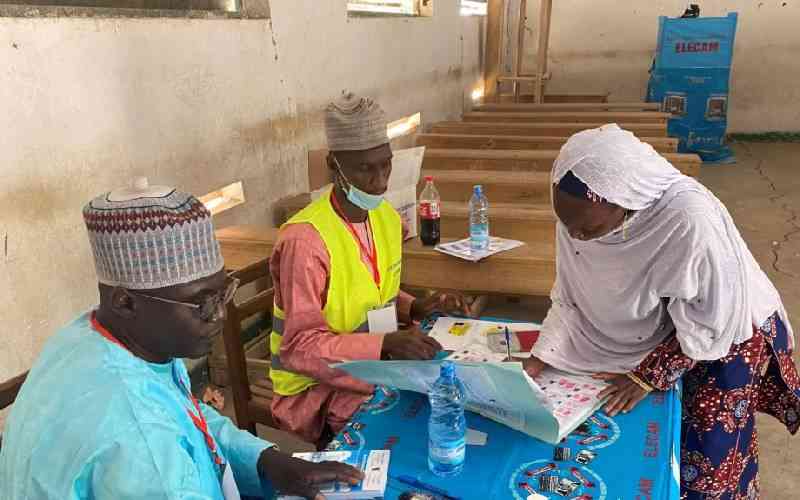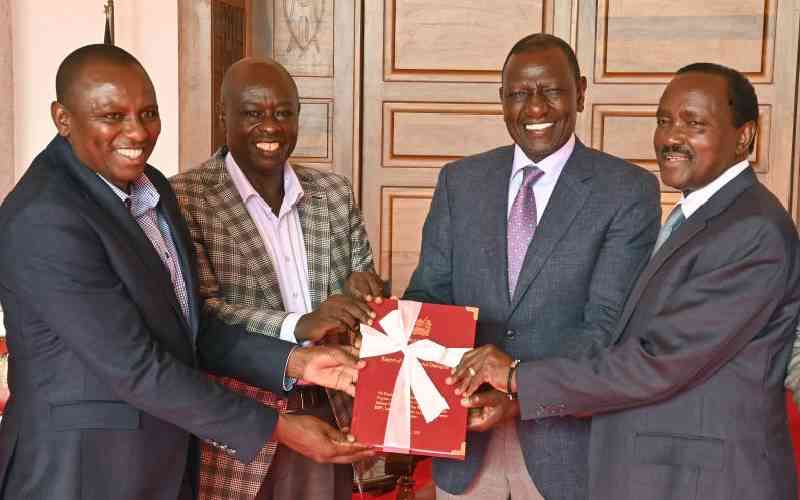The first test of a credible election is the credibility of the voters register. It must be complete, up-to date, accessible and verifiable. Yet not many people know or appreciate how tedious and time-consuming it is to compile a register that meets such stringent parameters.

That is why, in election management, early preparation is critical to success. By calling for early registration of voters, the Independent Electoral and Boundaries Commission is in essence trying to avoid a clog-up of activities close to Election Day. It means there will be less people seeking to register as voters as the elections draw near.
The month-long Mass Voter Registration commencing today is a countrywide campaign targeting those who had not registered by the 2013 polls, or since then. Those who may want to change their polling stations will be allowed to do so by filling a form at the new station of choice. An opportunity will also be given to all who register to verify the register by confirming their names and polling stations.
The registration of voters has been going on at constituency level under the Continuous Voter Registration (CVR) as provided by the Constitution.
The Elections law provides for continuous registration of eligible voters except in areas with election disputes or where by-elections are being conducted, such as Kericho and Malindi now. The law also stops the registration of voters three months to the election date to allow for the preparation and verification of the register. The last day to register as a voter for the next elections will be on May 10 2017.
The IEBC is using the Biometric Voter Registration (BVR) technology, which captures the features (facial and fingerprints) of the voter. This method of registration eliminates cheating and double registration. But electronic voter registration should not be confused with electronic voting which refers to the casting of your vote via a machine instead of a ballot paper.
Few countries in the world have deployed electronic voting but BVR registration is gaining popularity especially in countries with highly contested elections.
A hard copy register, complete with thumbnail photos of the voter is printed out from the register compiled from the BVR data. So even in the event of machine failure there is an alternative back up for accessing the register.
Contrary to what some people believe, BVR did not fail at the 2013 elections. These were the only machines used to register the 14.3m voters. Had they failed there would have been no election.
The paper token issued upon registration is not a voter’s card but an acknowledgement slip that you have registered.
Even without this slip, a voter can still vote because his or her registration status will be confirmed by the fingerprints using the EVID.
That’s is the function played by the Electronic Voter Identification Device (EVID), which is used to identify the voter when they get to the polling centre to vote. EVID uses the data in the register captured by the BVR. It is some of these EVIDs, which failed to work during the last election, hence the use of physical registers.
Between 1995 and 2015, an estimated 22.5m Kenyans were issued with new generation Identity Cards (ID). It is projected that three million have since died. Yet from the 22.5m potential voters only 14.3m registered as voters by 2013.
The IEBC is therefore targeting to register about 8m potential new voters for the 2017 general elections.
Stay informed. Subscribe to our newsletter
The original plan was to deploy 15,000 BVR kits over 24, 557 centres at the cost of 2 billion. The Commission was forced to revise the deployment of kits downwards to 2,878 when it received only 500m from the national Treasury. But donors, through UNDP, have since stepped in with funds to enable the Commission double the number of BVR kits to 5,756.
Eligible Kenyans who have reached the age of 18 and have valid identity cards or passports should therefore seize the opportunity to register as voters to take part in the next election as voters or candidates for the various elective seats.
 The Standard Group Plc is a
multi-media organization with investments in media platforms spanning newspaper
print operations, television, radio broadcasting, digital and online services. The
Standard Group is recognized as a leading multi-media house in Kenya with a key
influence in matters of national and international interest.
The Standard Group Plc is a
multi-media organization with investments in media platforms spanning newspaper
print operations, television, radio broadcasting, digital and online services. The
Standard Group is recognized as a leading multi-media house in Kenya with a key
influence in matters of national and international interest.
 The Standard Group Plc is a
multi-media organization with investments in media platforms spanning newspaper
print operations, television, radio broadcasting, digital and online services. The
Standard Group is recognized as a leading multi-media house in Kenya with a key
influence in matters of national and international interest.
The Standard Group Plc is a
multi-media organization with investments in media platforms spanning newspaper
print operations, television, radio broadcasting, digital and online services. The
Standard Group is recognized as a leading multi-media house in Kenya with a key
influence in matters of national and international interest.










